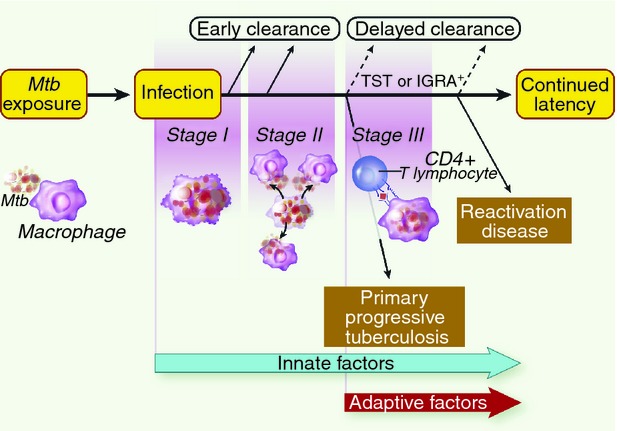Figure 1.

Phenotypes in the progression to tuberculosis (TB) disease after exposure. Mycobacterium tuberculosis (Mtb) exposure leads to infection. Early clearance (EC) occurs before the development of an adaptive immune response and is likely to be due to innate factors, during Stage I or II. If the pathogen evades EC mechanisms, an adaptive response develops (Stage III), measurable through a positive tuberculin skin test (TST) or interferon-γ release assay (IGRA). Early evasion of both innate and adaptive responses results in primary progressive TB. However, in the majority of infected individuals M. tuberculosis is contained as latent TB infection with only 5% later reactivating disease. Others speculate that clearance could also occur at the time of or after TST/IGRA conversion, we term this delayed clearance.
